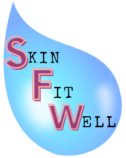Acne around the mouth is often caused by hormonal fluctuations in the body. Since the chin and jawline have a great amount of oil glands, breakouts tend to show up in these areas more often. However, there are also a number of foods that can aggravate the mouth area, causing breakouts. These include highly irritating foods, both to the actual mouth area and to your gut, which causes acne to form.
Table of Contents
1. Spicy Foods
I know, there’s nothing better than throwing Sriracha on, well, anything. But spicy foods are incredibly irritating to the skin itself. When you eat spicy foods, they tend to rub off onto your mouth area and this can cause irritation, inflammation, and even contact dermatitis. The symptoms involve an itchy rash around the mouth. Scratching it can not only cause acne (known as acne mechanica), but can also spread Cutibacterium acnes bacteria, which further causes acne to form.
The good news? Spicy foods can actually improve gut health and has been shown to have prebiotic effects in the stomach. It’s best to have spicy foods in moderation, so you can reap the gut benefits but stay away from the irritating effects on the skin.
2. High Sugar
High sugar foods are notorious for causing gut issues and dull skin.
Not only do they make you feel bloated and lethargic after the initial sugar-high, you will begin to see skin issues like aging skin and slow wound healing.
This is caused by glycation. Glycation occurs when a sugar molecule is bound to a protein or fat (lipid). This can happen with glucose and fructose sugars.
When this occurs, it produces something called an advanced glycation end product (AGE). AGEs cause cell senescence, which is when cells stop dividing, causing no new cells to be made.
This contributes to skin aging, loss of elasticity and collagen, slower wound healing, disruption of the skin barrier, and a multitude of non-skin related diseases.
The quality of your nutrition plays a large role in the aging of your skin and its ability to fight against environmental stressors. Mice studies have revealed that a diet high in carbohydrates yield sugars that cause the skin to be thin and unhealthy. It destroys the skin barrier. The good news is that reducing your sugar intake for a period of four months can reduce these negative effects on the skin.
3. Milk

It has long been suspected that consuming dairy products lead to an increase in acne and inflammation in the body. In particular, many people have mentioned that drinking milk or consuming products with dairy such as cheese or yogurt has caused hormonal acne around the mouth and jawline.
A meta-analysis done in 2018 pooled together a variety of studies that tested this potential link between milk and acne.
What they found was that the participants who drank milk, whether it was full fat or low fat, had a higher incidence of acne in comparison to those who did not drink milk. The more milk consumption there was, the higher the incidence of acne prevalence.
This is primarily caused by the amino acids present in the milk. This causes stimulations of the insulin-like growth factor-1 (IGF-1), which has been shown to be a contributing factor to acne formation.
The increase in synthesis of this molecule causes inflammation and increased sebum production. Since the oil glands in the face are present heavily around the mouth and jawline areas, this can cause acne to form.
4. High Sodium
Foods high in sodium (salt) include most fast food options, and the typical salty foods – chips, cured meat, etc. High sodium intake has been linked to an increase in acne.
Too much sodium in the diet is implicated in the rise of blood pressure. This causes inflammation and stress on the body which can be contributing factors to acne formation, as acne is a chronic inflammatory disease.
5. Soft Drinks
Sodas often contain very high amounts of sugar. As mentioned above, this can cause havoc on the body by increasing inflammation and sebum production.
Even diet sodas are overly processed and cause inflammation in the body. Many diet sodas contain artificial sweeteners such as aspartame.
While more conclusive evidence is needed, one study did show that aspartame increased weight gain and promoted more caloric intake among individuals who consumed aspartame sweetened drinks rather than naturally sweetened drinks. This causes inflammation in the body, which can contribute to acne formation around the mouth and jaw line.
6. High Fat Foods
A diet high in fat causes the body to increase inflammation and contributes to skin aging. It increases the amount of free fatty acid content in the body, which leads to skin inflammation. It increases the expression of inflammatory molecules in the body, affecting the skin’s ability to repair itself. Diets high in bad fats also contribute to oxidative stress and can slow wound healing of the skin.
Fried foods hold a lot of fat, and have shown to increase levels of AGE in the body. Again, this causes cells to stop dividing, which leads to an inflammatory response in the body.
Proteins involved in binding to fatty acids were shown to be increased in mice after being fed a high fat diet.
This caused inflammatory molecules like NLRP3 to be upregulated, causing skin lesions on the skin.
This could weaken the skin barrier and cause infections to affect the integrity of the skin, especially around the mouth as this area tends to have thinner, more sensitive skin, filled with oil glands that can be affected and break out in acne.
References
https://pubmed.ncbi.nlm.nih.gov/27224842/
https://www.ncbi.nlm.nih.gov/pmc/articles/PMC7146365/#!po=15.7609
https://www.ncbi.nlm.nih.gov/pmc/articles/PMC6115795/
https://www.ncbi.nlm.nih.gov/pmc/articles/PMC3198517/

